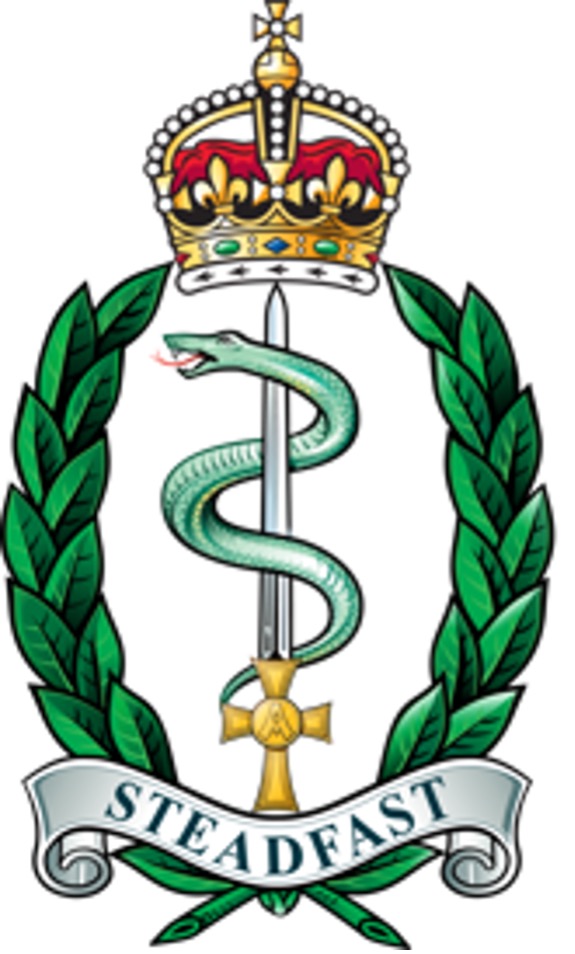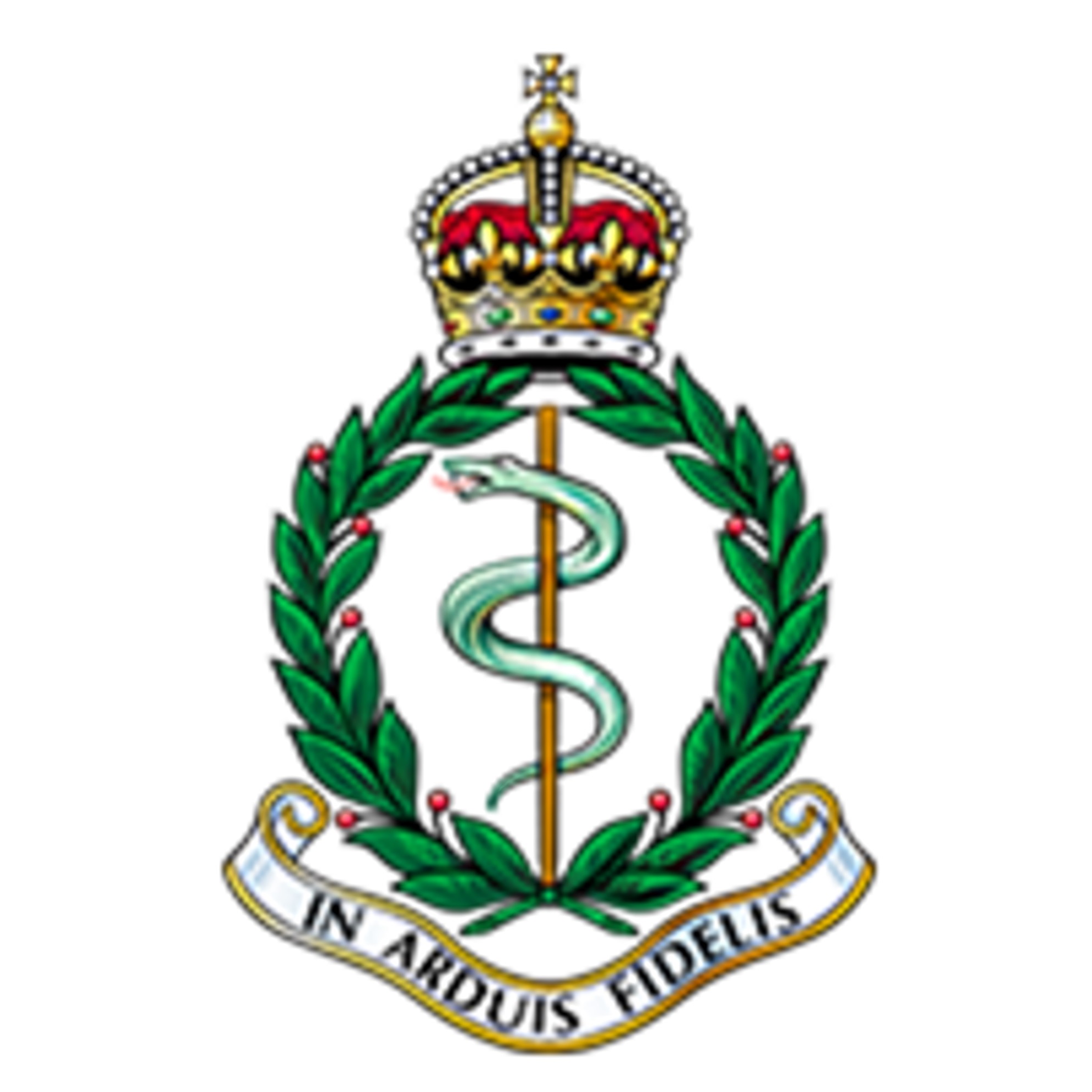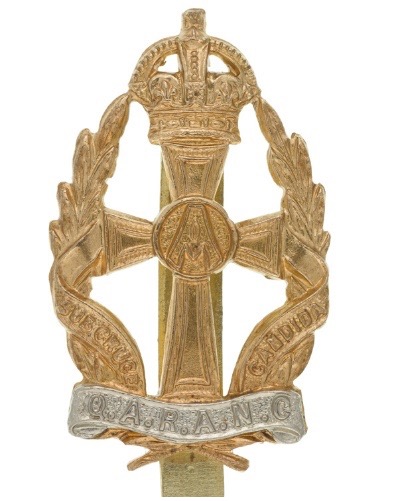THE BRITISH OVERSEAS RAILWAYS HISTORICAL TRUST
|  |
British Army Medical Services

Badge of the Royal Army Medical Services
Formation of the Royal Army Medical Service
On 15 October 2024, it was announced in parliament that King Charles had approved the creation of the Royal Army Medical Service (RAMS) for the British Army. This formation is the result of an amalgamation process known as Project Victoria, which integrates the Army's three previous healthcare branches:
- Royal Army Medical Corps (RAMC)
- Queen Alexandra's Royal Army Nursing Corps (QARANC)
- Royal Army Dental Corps (RADC).
The Royal Army Veterinary Corps (RAVC) will remain an independent corps outside of the Royal Army Medical Service due to their legal and operational combatant status which differs from the special protected status of the RAMC, RADC and QARANC.
The official amalgamation parade took place on 15 November 2024 at Staff College, Camberley.
Royal Army Medical Corps

Badge of the Royal Army Medical Corps
The RAMC and the Victoria Cross
The Victoria Cross is the British Commonwealths highest ranking award for valour and is awarded for actions under enemy fire. There have been only three double VCs awarded. These are known as the VC and Bar signifying a second award of a medal. Two of these VC and Bar have been awarded to the RAMC. Arthur Martin-Leake VC and Bar is of particular interest as he served as a Medical Officer with the Bengal Nagpur Railway.
History
Origins
As early as the 13th Century there are records of doctors treating soldiers in war. Medical services in the British armed services date from the formation of the Standing Regular Army after the Restoration of Charles II in 1660. This was the first time that a Medical Officer (MO) had an established career. For about the next two hundred years it was a Unit responsibility to organise medical provision. An element of oversight was provided by the appointment of three officials: a Surgeon-general, a Physician-general and an Apothecary-general.
Army Medical Board
In 1793 an Army Medical Board was formed (consisting of the Surgeon-general, Physician-general and Inspector of Regimental Infirmaries), which promoted a more centralised approach drawing on concurrent civilian healthcare practices. The Board, however, was criticised, for both high expenditure and poor management. By the end of the century the Board had been disestablished.
Army Medical Department
In 1810 the offices of Surgeon-general and Physician-general were abolished and a new Army Medical Department was established, overseen by a board chaired by a Director-General of the Medical Department.
The Crimean War, however, would lay bare the inadequacies of the Army Medical Department (and many others). In 1854 there were only 163 surgeons on the Department's books; the Army had just two ambulance wagons, both of which were left behind in Bulgaria, and it relied for stretcher bearers of the Hospital Conveyance Corps (which was made up of pensioners and others deemed too infirm to fight). In June 1855 a Medical Staff Corps was established (in place of the Hospital Conveyance Corps, which had by then been merged into the Land Transport Corps) and had its headquarters at Fort Pitt, Chatham. The Medical Staff Corps was set up to provide orderlies and stretcher bearers. The regimental basis of appointment for MOs continued until 1873, when a coordinated army medical service was set up. To join, a doctor needed to be qualified, single, and aged at least 21, and then undergo a further examination in physiology, surgery, medicine, zoology, botany and physical geography including meteorology, and also to satisfy various other requirements (including having dissected the whole body at least once and having attended 12 midwifery cases); the results were published in three classes by the Army Medical School. In 1884 the medical officers of the Army Medical Department were brought together with the quartermasters who provided their supplies to form the Army Medical Staff, which was given command of the Medical Staff Corps (which consisted entirely of other ranks).
Still, all was not well. MO’s were not granted military rank and felt that they were not treated equally. The British Medical Journal campaigned to alter this, but the Secretary of State for War was deaf to all entreaties. For over two years from 27 July 1887 there were no recruits to the Army Medical Department. A parliamentary committee reported in 1890, highlighting the doctors' injustices. There was no response from the Secretary of State for War. The British Medical Association, the Royal College of Physicians and others redoubled their protests. Eventually, by authority of a royal warrant dated 25 June 1898, officers and soldiers providing medical services were incorporated into a new body known by its present name, the Royal Army Medical Corps; its first Colonel-in-Chief was Prince Arthur, Duke of Connaught.
The RAMC began to develop during the Boer War of 1899–1902. The Corps itself lost 743 officers and 6130 soldiers in the war. However, far more of them, and thousands more of the sick and wounded whom they treated, would have died if it had not been for the civilian doctors working in South Africa as volunteers. The contrast between the smooth working of the Imperial Yeomanry Hospital at Deelfontein with the chaos of the RAMC hospitals, where an enteric epidemic had overwhelmed the staff, led to questions in Parliament.
In July 1901 the first meeting of the Committee of Reform took place. The new King, Edward VII. made sure that the plans for reform were not shelved by his government.
During the First World War, the corps reached its apogee both in size and experience.
Amalgamation
The Secretary of State for Defence John Healey announced on 15 October 2024, that it would amalgamate with the Royal Army Dental Corps and Queen Alexandra's Royal Army Nursing Corps to form one unified corps, the Royal Army Medical Service, on 15 November 2024.
Queen Alexandria’s Royal Army Nursing Corps

Queen Alexandria’s Royal Army Nursing Corps cap badge c1950
History
Although an "official" nursing service was not established until 1881, the corps traces its heritage to Florence Nightingale, who was instrumental in lobbying for the support of female military nurses. The Army Nursing Service, which had been established in 1881, and which from 1889 provided Sisters for all Army hospitals with at least 100 beds, had only a small number of nurses in its employ. In 1897, in an effort to have nurses available if needed for war, the service was supplemented by Princess Christian's Army Nursing Service Reserve (PCANSR). Nurses registered for the service and by the beginning of the First Boer War the reserve had around 100 members, but swelled its membership to over 1,400 during the conflict. PCANSR eventually became the Queen Alexandra's Imperial Military Nursing Service on 27 March 1902. In 1949, the QAIMNS became a corps in the British Army and was renamed as the Queen Alexandra's Royal Army Nursing Corps. Since 1950 the organisation has trained nurses, and in 1992 men were allowed to join.
Amalgamation
The Secretary of State for Defence announced on 15 October 2024, that it will amalgamate with the Royal Army Dental Corps and Royal Army Medical Corps to form one unified corps, the Royal Army Medical Service.
Territorial Force Nursing Service
The Territorial Force Nursing Service (TFNS) was originally formed to staff the territorial force hospitals at home, and the majority of its members spent their service during World War I in the United Kingdom, not only in the 25 territorial hospitals, but also in hundreds of auxiliary units throughout the British Isles. Within a short time, they were also employed in the eighteen territorial hospitals abroad, and alongside their QAIMNS colleagues in military hospitals and casualty clearing stations in France and Belgium, Malta, Salonica, Gibraltar, Egypt, Mesopotamia and East Africa.
Territorial Army Nursing Service
The Territorial Army Nursing Service (TANS) was formed in 1920, when the Territorial Force was renamed the Territorial Army. It existed until 1949, when both regular and reserve nurses joined the QARANC. Territorial Army nurses served alongside QAIMNS nurses all over the world, and in all campaigns during World War II.
Museum
The Museum of Military Medicine covers all four medical corps.
The museum is located at Keogh Barracks, Mytchett Place Road, Mytchett, Surrey, GU12 5RQ, and is easily accessible by car from the M3. Please bring some photographic identification with you to obtain a pass at the main gate of the barracks. The barracks are at the lower end of Mytchett Place Road, to the south of Potter’s Restaurant and the Basingstoke Canal Centre.
The nearest railway station for mainline trains from London is Farnborough (Main) or Ash Vale. A taxi from the train stations will cost around £8-£12. Trains from Reading or Guildford stop at North Camp station which is also close to the Museum.
In December 2020, plans were approved for the construction of a new building in Cardiff, into which the museum would relocate.
|
| Registered Charity No 290944 | Company Limited by Guarantee No 1862659 |